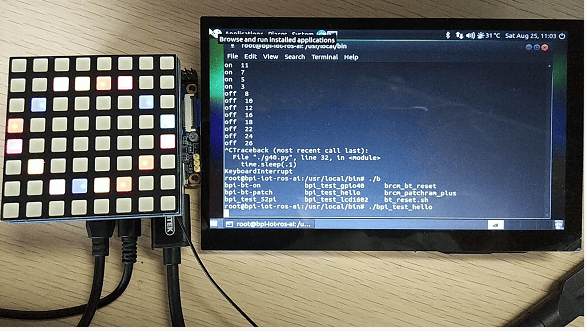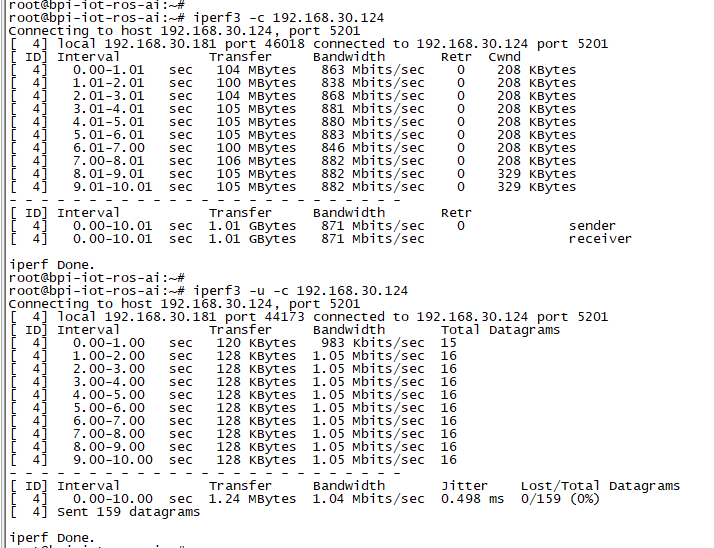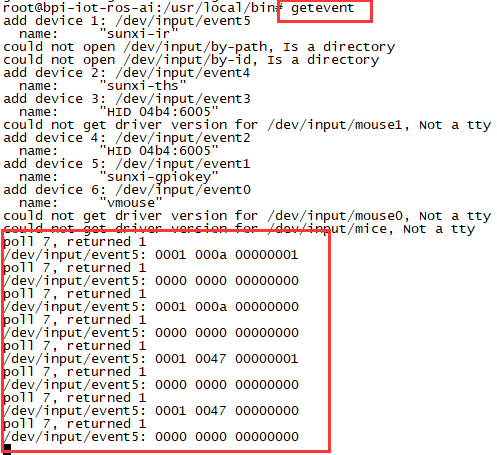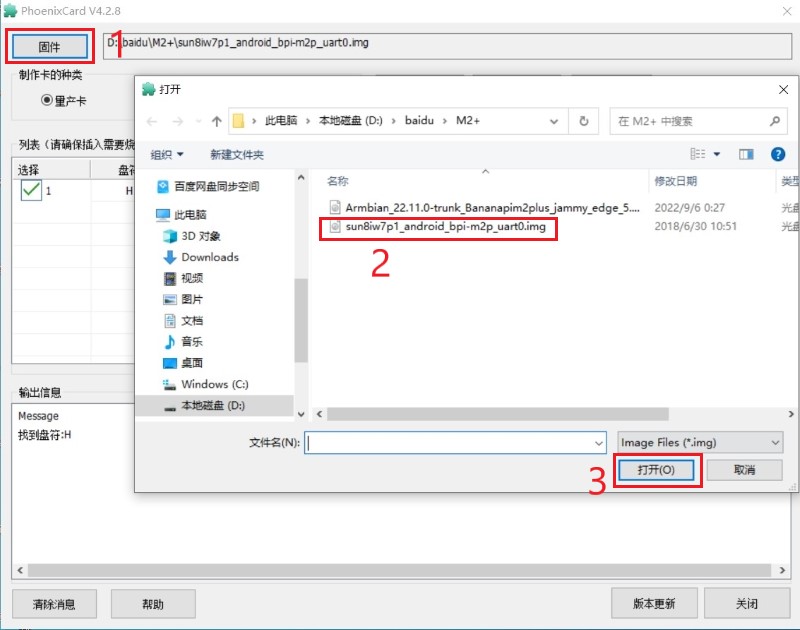
¶ Introduction
Banana Pi M2+ is mini size development board that offers great computing performance in an ultra portable form factor.It is a 65mm*65mm fantastic mini size board with Allwinner H series chips. It comes with different versions but share the same interfaces.
| More Infomation: Banana Pi BPI-M2 Plus |
¶ specifications
-
Quad-core 1.2GHz Cortex-A7 H3
-
1GB DDR3
-
8GB eMMC onboard
-
WiFi and BlueTooth onboard
-
10/100/1000Mbps Ethernet Port
¶ Development
¶ Android
¶ Prepare
-
Download PhoenixCard: https://pan.baidu.com/s/1-fjvPqtG_zewVzqnXf1AHw?pwd=eid9
¶ Install Image to SD card
-
Put your TF card into a TF-USB adapter, and then plug adapter in your Windows PC usb interface.
-
Prepare your image, and download image burning tools PhoenixCard.exe.
-
Use "PhoenixCard.exe" to burn android image to TF card.
-
Select the image in the image path option

-
Select set as card startup, then click on burn image

-
Burning ended,
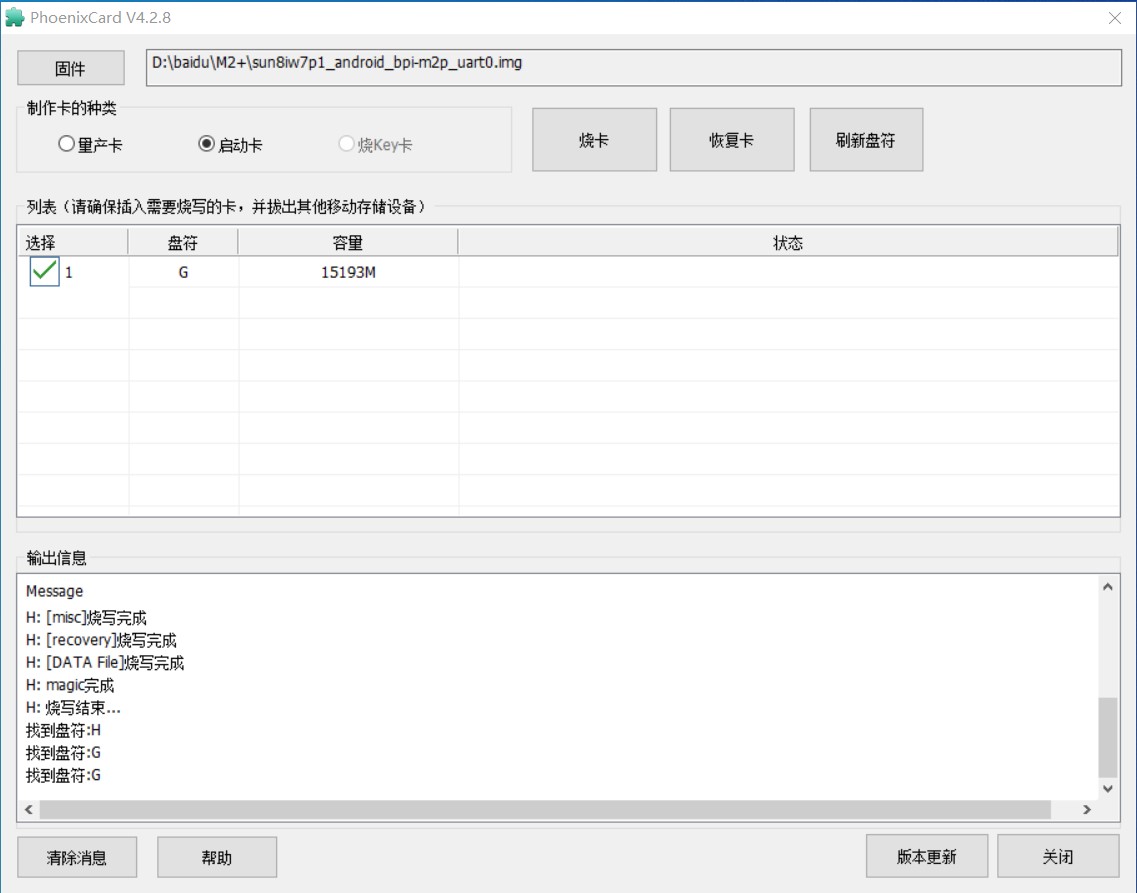
-
¶ Install Image to eMMC
-
Put your TF card into a TF-USB adapter, and then plug adapter in your Windows PC usb interface.
-
Prepare your image, and download image burning tools PhoenixCard.exe.
-
Use "PhoenixCard.exe" to burn android image to TF card.
-
Select the image in the image path option

-
Select mass production card,then click on burn image
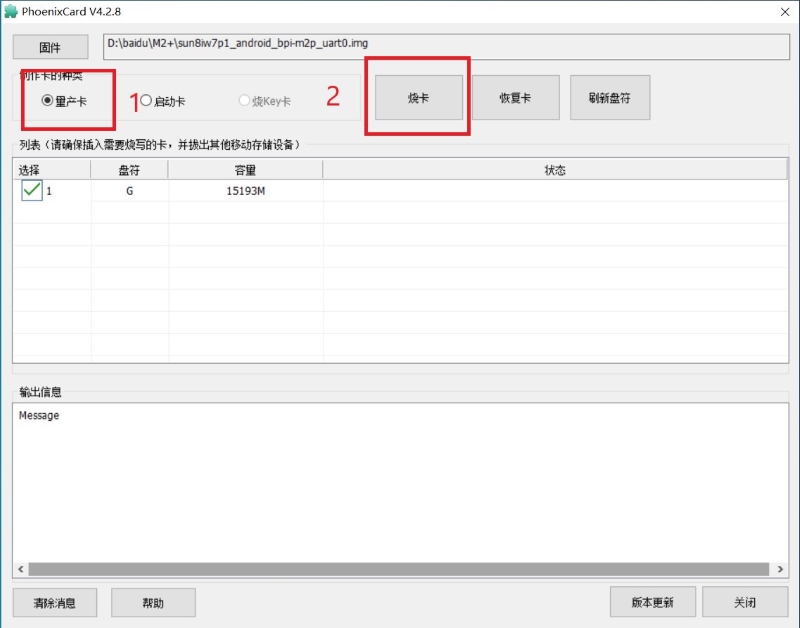
-
Burning ended.
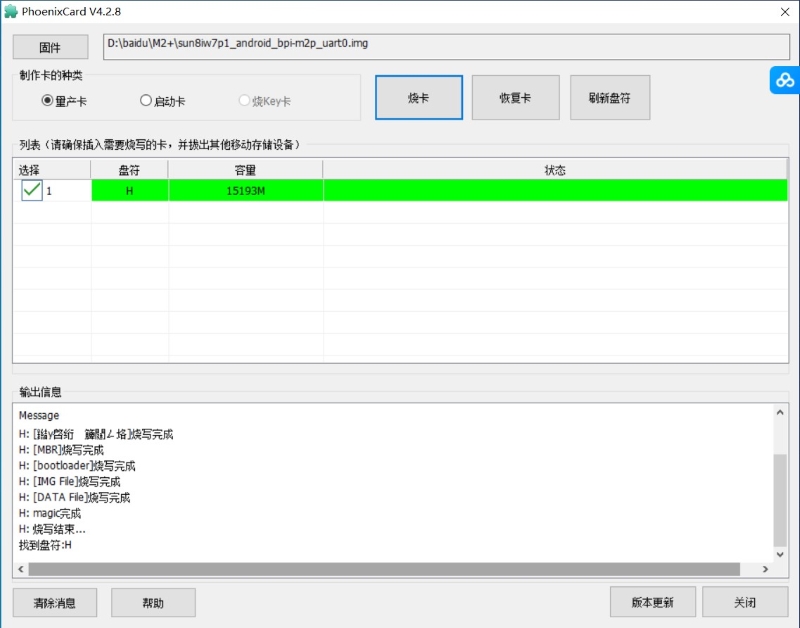
-
-
After the image is burned, insert the SD card into the board and power on to start.After startup, the image will be automatically burned to the EMMC.
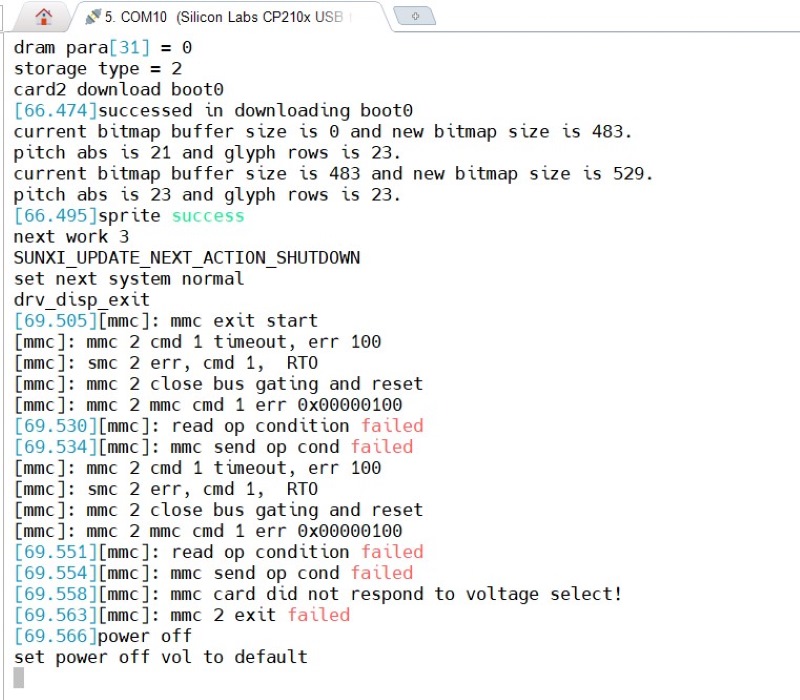
-
After the burning is completed, the power will be cut off, and the SD card will be removed. Power on again to start from EMMC.
¶ Linux
¶ Prepare
-
Prepare 8G/above TF card, USB-Serial interface
-
Using your USB-Serial Connect debug console on M2P
-
Login user/password: pi/bananapi or root/bananapi.
¶ Install Image to SD card
Windows PC
Install Image with Balena Etcher.
Balena Etcher is an opensource GUI flash tool by Balena, Flash OS images to SDcard or USB drive.
-
Click on "Flash from file" to select image.
-
Click on "Select target" to select USB device.
-
Click on "Flash!" Start burning.
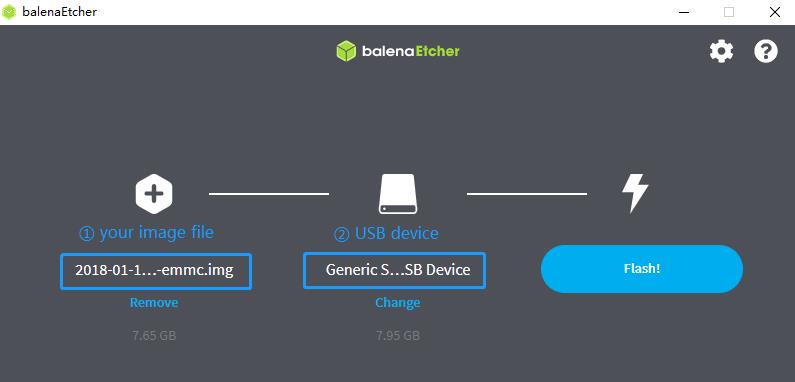
Linux PC
There are two methods for you to choose from.
-
Install Image with dd command on Linux, umount SDcard device /dev/sdX partition if mounted automatically. Actually bpi-copy is the same as this dd command.
$ sudo apt-get install pv unzip $ sudo unzip -p xxx-bpi-m2_plus-xxx.img.zip | pv | dd of=/dev/sdX bs=10M status=noxfer -
Install image with bpi-tools on Linux, plug SDcard to Linux PC and run
$ sudo apt-get install pv unzip $ sudo bpi-copy xxx-bpi-m2_plus-xxx.img.zip /dev/sdX
¶ Install Image to eMMC
-
Copy "xxx-sd-emmc-xxx.img.zip / xxx-sd-emmc-xxx.img" to your USB disk
-
Plug your USB disk in M2P
-
Execute(If it is automatically mounted, skip this step)
mont /dev/sda1 /mnt -
There are two methods to burn images to eMMC.
-
Using bpi-copy for burning.
bpi-copy xxx-sd-emmc-xxx.img.zip / xxx-sd-emmc-xxx.img -
Using the dd command for burning.
sudo dd if=/mnt/sda1/xxx-sd-emmc-xxx.img of=/dev/mmcblk0
-
-
Then power off M2P, take TF card out, power on M2P with EMMC
¶ Update image
For example, update your image to support new emmc5.1
* execute “bpi-tools”, to update your bpi tools;
* execute “bpi-update -c bpi-m2p.conf”, to download new driver to update your image
* execute “file *.tgz”, to check download files’ type is compressed data
* execute “bpi-bootsel”, you will see the bootloader path, “/usr/lib/u-boot/bananapi/bpi-m2p/BPI_M2P_720P.img.gz”
* execute “bpi-bootsel /usr/lib/u-boot/bananapi/bpi-m2p/BPI_M2P_720P.img.gz”, to update your bootloader
* reboot¶ Advanced Development
¶ How to build uboot & kernel
Install tools
apt-get udpate
apt-get install gcc-arm-linux-gnueabihf u-boot-tools
apt-get install pv
curl -sL https://github.com/BPI-SINOVOIP/bpi-tools/raw/master/bpi-tools | sudo -E bashClone code
git clone: https://github.com/BPI-SINOVOIP/BPI-M2P-bsp.git
./build.sh¶ How to create an image
-
Prepare a SD card which have installed system(Ubuntu/Raspbian/..)
-
Boot your SD card with M2P, after M2P finish starting, copy your files and config your system, then poweroff M2P. [If you don’t want to config your system, you can skip this step]
-
Plug your SD card in PC(which is running Linux)
cd /media ln -s <your account> pi -
Execute
bpi-migrate -c bpi-m2p.conf -c ubuntu-mate-from-sd.conf -d /dev/sdx -
Then you could get your own image now
¶ GPIO Control
-
To access a GPIO pin you first need to export it with
echo XX > /sys/class/gpio/export -
with XX being the number of the desired pin. To obtain the correct number you have to calculate it from the pin name (like PH18)
(position of letter in alphabet - 1) * 32 + pin number
for PH18 this would be ( 8 - 1) * 32 + 18 = 224 + 18 = 242 (since 'h' is the 8th letter)
echo "out/in" > /sys/class/gpio/gpio*NUMBER*/direction echo "0/1" > /sys/class/gpio/gpio*NUMBER*/value
¶ OTG
-
On M2P console:
Execute
./adbd.sh ps -ax | grep adbdsee if adbd is set up
-
On PC terminal:
-
If adbd was succeed to set up, insert OTG-USB interface to M2P and PC(with Ubuntu system)
-
Execute
adb devicessee if PC has recognised M2P OTG.
-
If yes, we could execute
adb shellconnect M2P by adb now.
-
¶ Bluetooth
-
Use bluetoothctl tool to operate BT
-
Execute "bluetoothctl"
-
If you don’t know how to use bluetoothctl, type "help", you will see more commands
-
Execute these commands:
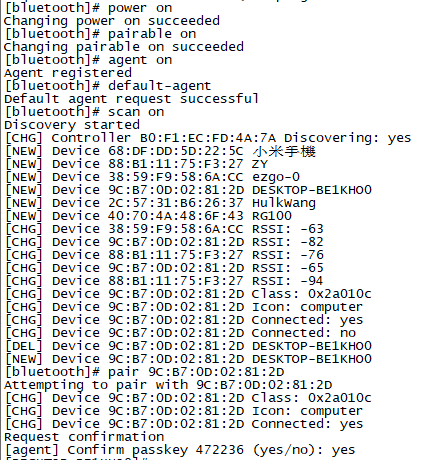
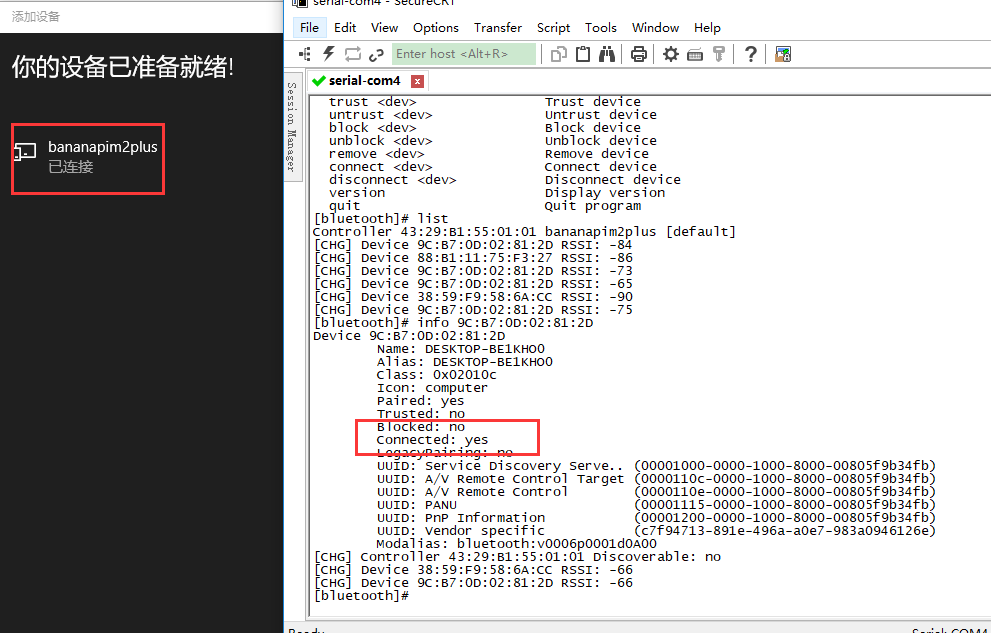
¶ WiFi
Driver code: https://github.com/BPI-SINOVOIP/BPI_WiFi_Firmware
You have two ways to setup WiFi Client
-
Use commands to setup WiFi client
ip link set wlan0 up iw dev wlan0 scan | grep SSID vim /etc/wpasupplicant/wpa_supplicant.confnetwork={ ssid="ssid" psk="password" priority=1 }wpa_supplicant -iwlan0 -c /etc/wpa_supplicant/wpa_supplicant.conf dhclient wlan0 -
Use UI interface to setup WiFi Client
¶ Change Logo
-
Download M2P bsp code
git clone https://github.com/BPI-SINOVOIP/BPI-M2P-bsp cd BPI-M2P-bsp -
Change to your boot logo
Prepare a ".bmp" picture, here I rotate 180°, as follows :

-
Change your picture name as "bootlogo.bmp"
-
put your picture to "sunxi-pack/chips/sun8iw7p1/configs/BPI-M2P-xxxP/" Here I replaced “bootlogo.bmp” which is under “sunxi-pack/chips/sun8iw7p1/configs/BPI-M2P-720P/” as an example:

-
-
Build your code
./build.sh BPI-M2P-720Pchoose 1

After you built the project, you will see “SD” directory

-
Install a raspbian image on your SD card
-
Plug your SD card into your Ubuntu PC
check your SD card was recognised as /dev/sdxx, as you can see, mine sd card was recognised as /dev/sde

-
Then
cd SD/bpi-m2p/100MB -
Execute
bpi-bootsel BPI-M2P-720P.img.gz /dev/sde
¶ Clear boot
git clone https://github.com/BPI-SINOVOIP/BPI-files/tree/master/SD/100MB
bpi-bootsel BPI-cleanboot-8k.img.gz /dev/sdX¶ Camara function
We use HDF5640 camara.
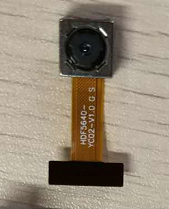
Guvcview
Use your UI interface to operate camara
Applications → Sound & Video → guvcview
Shell
We also have built-in command in /usr/local/bin to test camara
-
Test picture taking function
./test_ov5640_image_mode.sh -
Test video recording function
./cameratest.sh
¶ BPI-Tools
Install Bpi-tools
Execute
curl -sL https://github.com/BPI-SINOVOIP/bpi-tools/raw/master/bpi-tools | sudo -E bash -Update Bpi-tools
Execute
bpi-tools
¶ RPi.GPIO
Install RPi.GPIO
git clone https://github.com/BPI-SINOVOIP/RPi.GPIO"
cd RPi.GPIO
sudo apt-get update
sudo apt-get install python-dev python3-devInstall the module
sudo python setup.py installor
sudo python3 setup.py installUsing RPi.GPIO
cd /usr/local/bin
./bpi_test_g40.py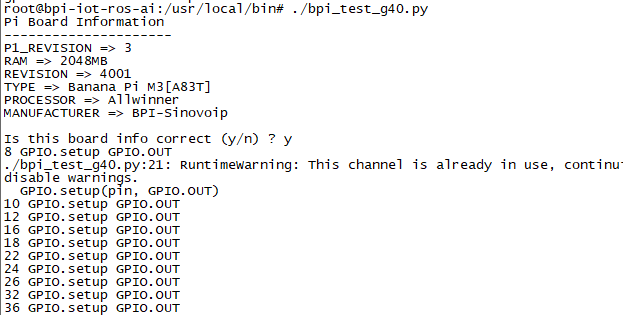
¶ WiringPi
-
We also have built-in test command in
/usr/local/bin
How to Update WiringPi
-
Execute
bpi-update -c pkglist.conf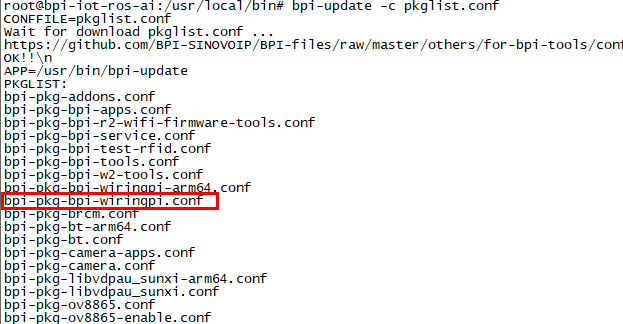
-
Execute
bpi-update -c bpi-pkg-bpi-wiringpi.conf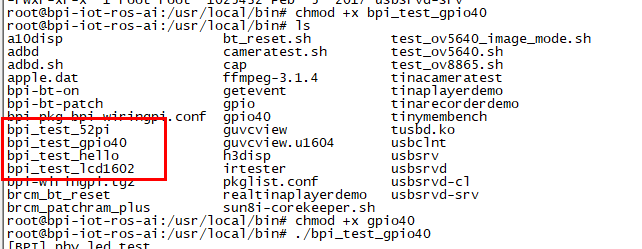
RGB 1602 LCD
-
Execute
/usr/local/bin/bpi_test_lcd1602.sh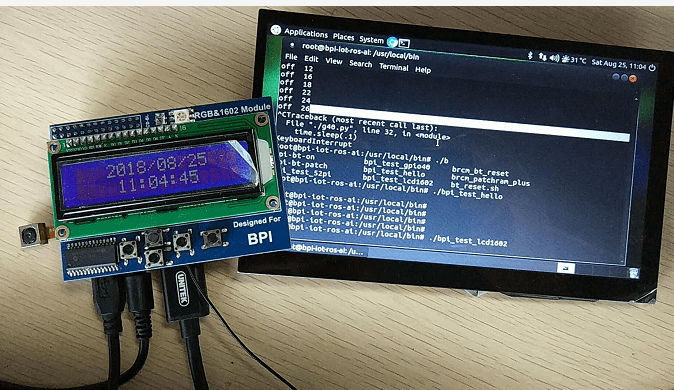
0.96 Inch OLED Display
-
Execute
/usr/local/bin/bpi_test_52pi.sh
8x8 RGB LED Martix
-
Firstly you need a GPIO Extend Board for 8x8 LED Martix
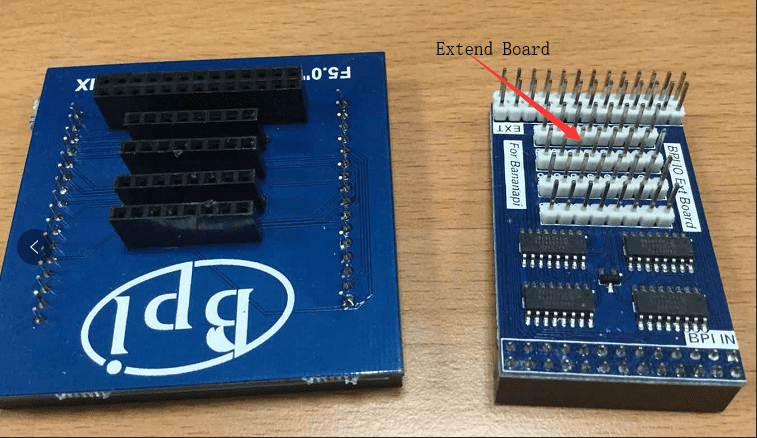
-
Execute
/usr/local/bin/bpi_test_gpio40.sh